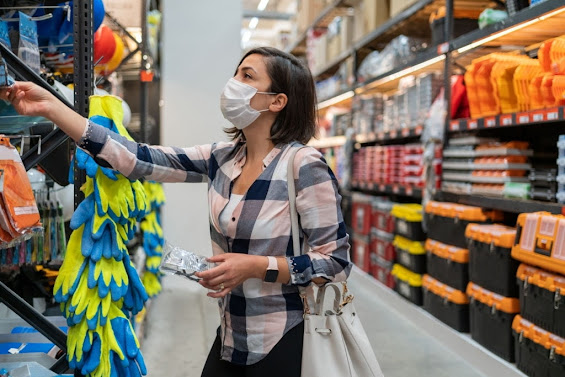Rayon is a natural material made of cellulose derived from cotton or wood pulp. It is a convenient and inexpensive fiber to work with which has various uses. Many types of rayon can imitate the texture and appearance of other natural fibers like silk, linen, and cotton. The different kinds of rayon fabric include lyocell, modal, and viscose.
History and origin
In the 1860s, the silk industry of France was suffering from a crisis due to an illness harming the silkworm. Count Hilaire de Chardonnet and Louis Pasteur were trying to solve this problem faced by the silk industry. During that time, Chardonnet took an interest in finding a method for producing artificial silk, and it was in 1885 that he patented the first fruitful way to make fiber from cellulose.
This material was known as imitation or artificial silk for the upcoming four decades. By 1925 making imitation or artificial silk became an industry, and the imitation or artificial silk was called rayon by the Federal Trade Commission. This name Rayon was used to refer to any artificial fiber produced from cellulose.
How is rayon fabric produced?
Rayon is produced by taking wood pulp or another plant-like eucalyptus, cotton, bamboo, and soy and then treating it with various chemicals. The chemical procedure produces fibers that are industrially made into patterned and colored or bleached rayon fabric.
The most versatile and common rayon is viscose rayon. It can be blended with natural or artificial fibers and turned into fabrics of different textures and weights. It is also a comfortable, cost-effective, and absorbent fabric for wearing. High-wet modulus rayon is a fiber more robust than the regular version of rayon. It is like cotton and can be easily taken care of.
Fabrics comprising of modulus rayon can be washed by machinery, while those made up of conventional rayon should be dry cleaned. Whether the basic raw material used for manufacturing rayon is cotton linter or wood pulp, its processing needs to be done for purifying and extracting the cellulose.
The resulting white purified cellulose sheets then undergo treatment for forming regenerated cellulose filaments. Then, these filaments are turned into yarns and finally turned into the needed fabric.
Uses of rayon
Rayon is commonly used to make different home-ware articles like curtains, sheets, blankets, and clothing. It can also be for manufacturing surgical products and tire cords.
Qualities of rayon fabric
Luster and shine
Whenever used for making artificial silk, rayon is lustrous, shiny, and very smooth.
Softness
Whether rayon is used to imitate wool, natural silk, or any other natural fabric, rayon is inclined to be soft. This quality of rayon fabric makes it commonly used for home furnishings and clothing.
Not suitable for breathing
Even though rayon is used many times for manufacturing summer garments and can be very breezy and light, because its fibers are not natural, they ward off sweat instead of absorbing it. On a warm day, rayon fabric pools and gathers sweat instead of evaporating and drinking it.
Stiff when wet
If you have cleaned any rayon clothing item, you will likely know that the rayon fabric gets weighty and stiff when wet.
Is the production of rayon sustainable?
Rayon production needs several chemicals and natural resources, which means that it is not very environmentally friendly, and therefore, rayon is not a sustainable fabric. The chemicals used to produce rayon pollute the air and water a lot, and as rayon production needs a lot of pulp of wood or another plant, this fabric has been held responsible for deforestation.
Nevertheless, some kinds of rayon are more sustainably produced than others. Those kinds of rayon are produced from the pulp extracted from sustainably harvested and planted forests. It is also essential to know that environmental protection rules in some regions lead to more environment-friendly and sustainable rayon fabric than others.
This is because of the reusing chemicals employed in the rayon production process. As a rayon fabric manufacturer, you should try your best to produce sustainable and environment-friendly rayon fabric to meet the demand for rayon fabric in today’s competitive world. This would help you sustainably achieve your business objectives, such as growth in sales revenue, market share, and profits.
Read Related Articles:
https://shaoxingtextile.blogspot.com/2021/10/a-guide-to-choosing-perfect-fleece-made.html
https://shaoxingtextile.blogspot.com/2021/11/all-you-need-to-know-about-rayon-fabric.html
https://shaoxingtextile.blogspot.com/2021/09/interesting-things-to-know-about-rayon.html
https://shaoxingtextile.blogspot.com/2021/09/a-detailed-guide-to-various-types-of.html
https://shaoxingtextile.blogspot.com/2021/05/three-key-factors-that-make-polar.html

Comments
Post a Comment